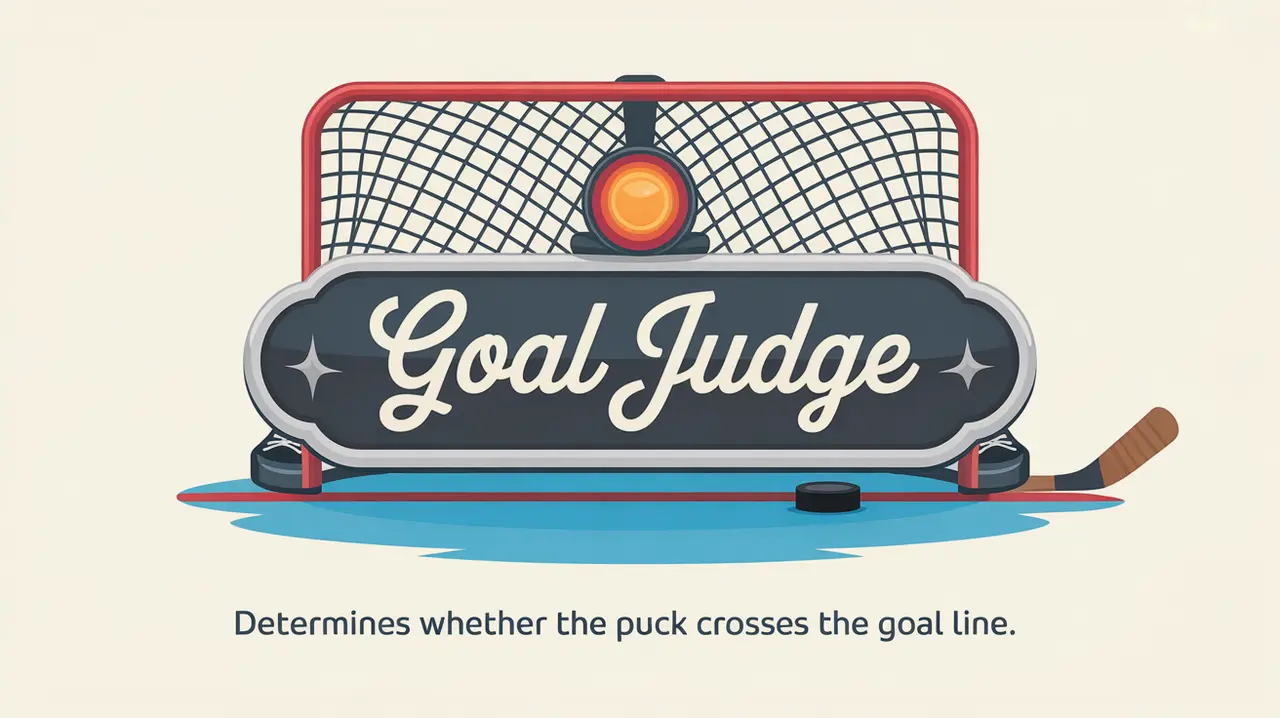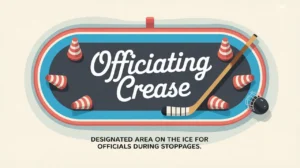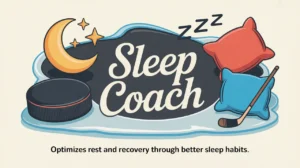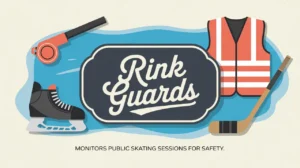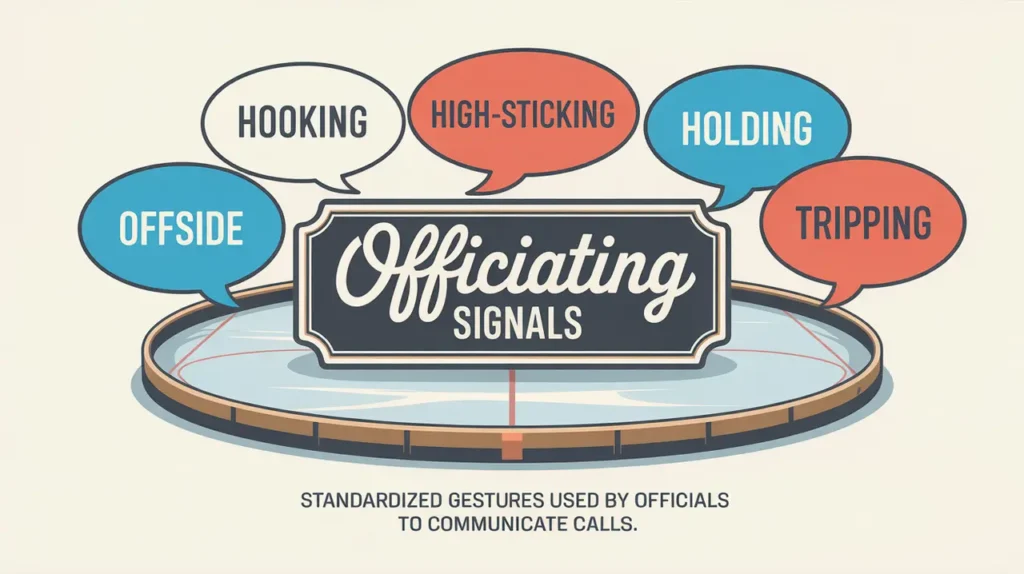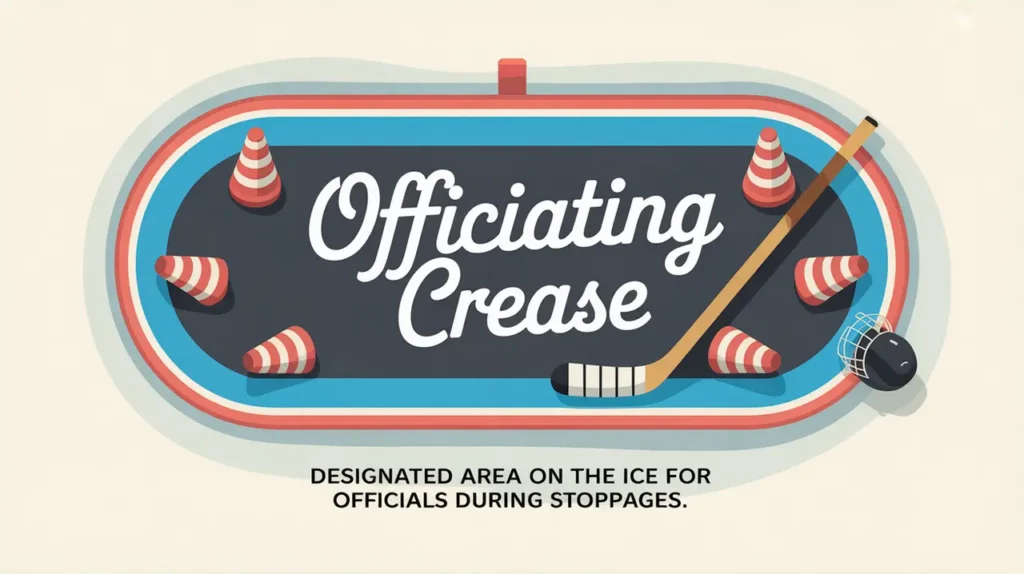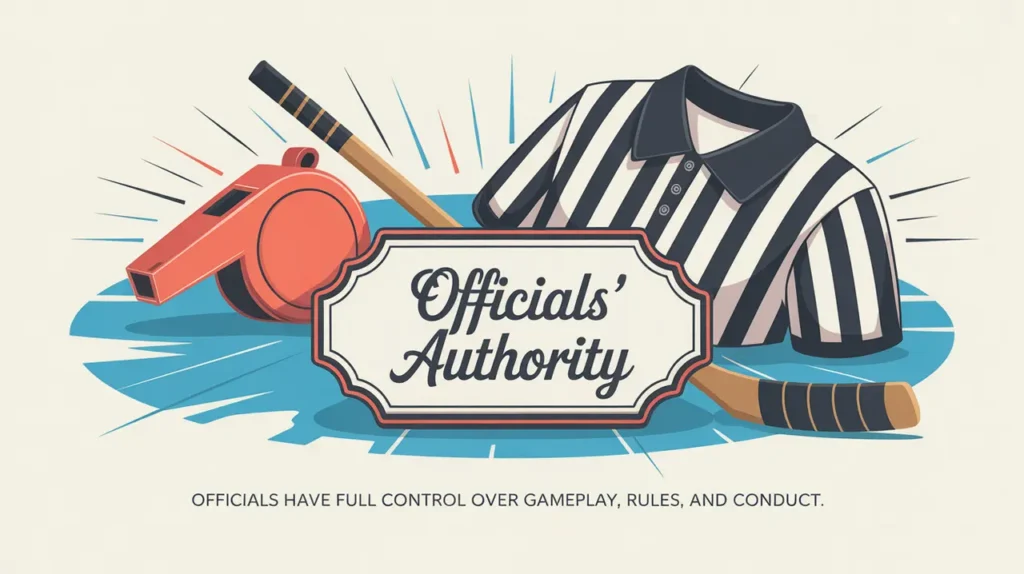Jim’s Intro to the Goal Judge
Hi folks, Jim here, the only commentator who once celebrated a goal so early that the puck was still sitting on the blue line.
What is a goal judge?
A goal judge is an off-ice official positioned behind each goal, responsible for determining whether the puck legally crosses the goal line. Traditionally, they signal goals by activating a red light, which alerts referees, players, and spectators.
While technology like overhead cameras and video review has taken a bigger role in modern hockey, goal judges still provide an immediate, human perspective that often assists referees in close, fast-moving situations.
How does it work?
Goal judges influence the game through focused observation and quick signaling:
Positioning Behind the Net
- Goal judges sit in a booth directly behind the goal, giving them a clear, straight-on view of the goal line.
- Their angle allows them to see whether the puck completely crosses the line, even through traffic.
Watching the Entire Play
- They track the puck intently from the moment it enters the offensive zone until the whistle blows.
- They must remain sharp through scrambles, deflections, and rebounds where goals often happen in split seconds.
Signaling a Goal
- If the puck crosses the line legally (not kicked, high-sticked, or goaltender-interfered), the goal judge immediately turns on the red light.
- This signal alerts referees, who ultimately have the final say.
Supporting Referee Decisions
- Referees may consult goal judges during close or controversial plays, especially if they were screened or the puck entered and exited the net quickly.
- The judge’s perspective can help confirm or clarify what was seen.
Remaining Neutral and Silent
- Goal judges don’t argue, celebrate, or get involved in penalties. Their sole responsibility is determining goal line calls objectively.
Common Situations Involving Goal Judges
- Bang-Bang Plays at the Line: A puck slipping under a pad and just crossing before being swept out.
- Scrambles and Rebounds: Multiple players in the crease, hard to see from the ice.
- Quick In-and-Out Goals: Pucks that hit the back bar and bounce out so fast even players are unsure.
- Goalie Cover Attempts: Determining if the puck crossed before the whistle.
- Video Review Assists: Providing immediate input before or during an official review.
How do you make good decisions with it?
Great goal judges rely on focus, discipline, and restraint.
- Lock Your Eyes on the Goal Line: Don’t follow players or look away; your job is the line.
- Act Immediately but Confidently: If you saw it go in, signal. Hesitation causes confusion.
- Never Guess: If you didn’t see it clearly, keep the light off. Refs and video can sort it out.
- Stay Neutral: No cheering, no coaching, no commentary. Just the signal.
- Respect the Referee’s Authority: The light is advisory, not final.
How do you master it?
Mastering the goal judge role takes sharp focus, rule knowledge, and calm under pressure. Judges learn to read puck trajectories, recognize legal vs. illegal goals quickly, and develop the discipline to stay locked in on every play. Experience teaches them how to trust what they see, even amid chaos.
What does it look like when done right?
A great goal judge is alert on every rush, follows the puck through traffic, and hits the light the instant it crosses the line, no hesitation, no drama. Their signal backs up the referee’s call or prompts a closer look if something happened too fast for the eye on the ice. Players and officials alike come to trust their steadiness.
Commentator’s Corner
Jim’s Take
Goal judges are like hawks on a perch. They say nothing, move little, but see everything that matters in a heartbeat.
Parent Tip
If your teen is curious about officiating, goal judging is a great way to build focus and learn the flow of the game from a unique vantage point.
Player Tip
Play to the whistle, not the light. Even if the red light flashes, the referee’s decision is what counts.
A Final Thought
Goal judges are the quiet arbiters of truth at the goal line, using sharp eyes and steady hands to keep the game honest. When mastered, the role blends focus, neutrality, and split-second judgment, ensuring that goals are goals, and near-misses stay just that.

